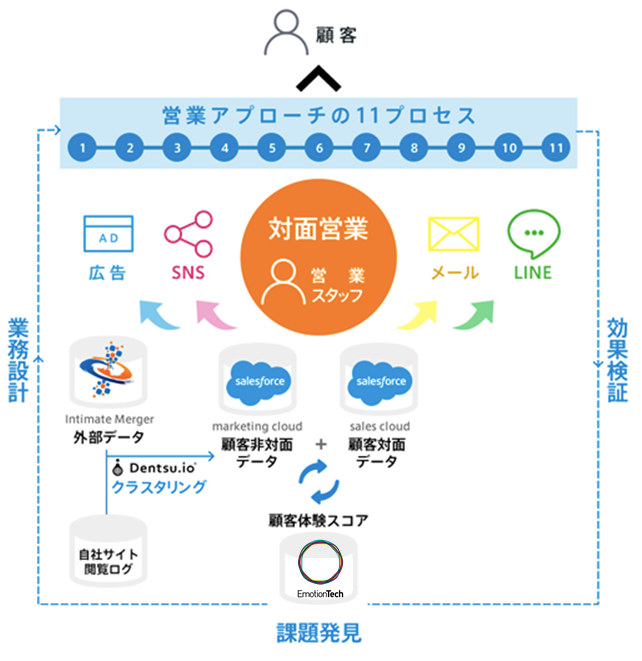I'm resuming my series after a year's hiatus. My previous two installments were titled "Is Big Data an Enemy or Ally for Advertising Agencies?" During that time, I repeatedly heard surprised reactions from both inside and outside the company, like "So advertising agencies are tackling this kind of field too?"
By the way, haven't you noticed that we don't hear the term "big data" as often lately?
One reason is that cloud environments supporting marketing tools now enable big data processing, making advanced marketing using big data commonplace. It's no longer about discussing the potential of "big data"; the question has shifted to what we actually do with it.
That's why we titled this series "Digital Marketing Beyond Advertising." Over several installments, we'll discuss what advertising agencies are achieving through big data-driven "digital marketing" beyond digital advertising.
This is because the concept of digital marketing is broad, with definitions varying by person and perspective. Yet, within advertising agencies, "digital marketing" tends to be limited (or limited by others) to digital ad targeting and digital content optimization. At the same time, however, we feel advertising agencies are increasingly being strongly questioned about what value they can provide through digital marketing in areas beyond advertising and content.
Supporting Face-to-Face Sales with Digital Marketing
Over the past year or so, I've had many opportunities to speak with sales development and corporate planning departments at companies primarily using face-to-face channels, such as automotive, insurance, energy, and B2B firms. They consistently cite the challenge of "salespeople being unable to meet customers." The reasons include customers shifting their information gathering to the web and heightened security awareness at companies and residences making visits difficult. This inability to meet customers has led to insufficient customer understanding, making it difficult to propose products at the optimal timing or provide appropriate after-sales follow-up experiences.
In response to these challenges, Dentsu Inc., Salesforce.com, Intimate Merger, and EmotionTech (formerly wizpra) recently announced a solution to enhance face-to-face sales through digital marketing.
A Solution for Managing Customer Experience
In a nutshell, this solution enables sales teams to manage customer experiences by detecting customer changes remotely—even when unable to visit—and delivering services at the optimal moment. It consists of two solutions delivered through six steps.
[Solution ①] *Provided in Steps 1-3 and 6
Using a proprietary research methodology co-developed with EmotionTech, customers are categorized into four types, and the company's face-to-face sales activities are broken down into 11 processes. For each customer type, past customer experience evaluations across each sales process are quantified to identify challenges.
【Solution 2】※Provided in Steps 4 and 5
We integrate Salesforce's "Salesforce Marketing Cloud" and "Salesforce Sales Cloud" with Intimate Merger's approximately 400 million audience data points. This provides a mechanism to leverage non-face-to-face customer data within sales support tools, enabling sales teams to deepen their customer understanding and execute appropriate sales activities.
■Step 1: Identifying Issues in Sales Processes
Calculate the "Customer Experience Score for Sales Activities" through proprietary research and analysis, hypothesizing challenges across 4 customer types and 11 sales processes.
■Step 2: Validating Challenges through SFA Integration
(If already implemented) Cross-reference sales activity and sales history data within the SFA with the customer experience score, conduct detailed analysis, and validate the hypothesized challenges.
■Step 3: Planning Issue Improvement Measures
Dentsu Inc.'s sales process consultants plan improvement measures.
■Step 4: Acquiring Non-Face-to-Face Customer Data
Acquire non-face-to-face customer segment information (e.g., various life stage changes) to resolve insufficient customer understanding, a primary cause of challenges in face-to-face sales operations.
■Step 5: Business Support Tool Implementation
Implementation of operational support tools (such as MA, SFA) integrated with non-face-to-face customer data.
■Step 6: Verify the Effectiveness of Measures
Regularly collect and analyze changes in customer experience scores resulting from sales activities utilizing non-face-to-face data (possible at the smallest unit level, such as sales offices or individual sales representatives).




